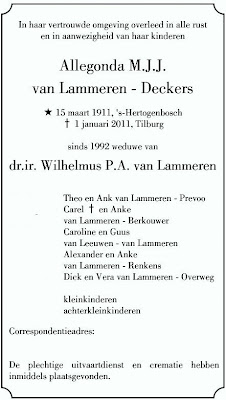When the then existing KLM Passenger
Sales office in Copenhagen moved to a new location back in 1996, it was cleaned
out completely. All kinds of rubbish were set aside for the garbage collectors.
The rubbish included a plastic bag filled to the rim with approx. 3000
photographs. For one reason or another the bag was moved to the Cargo office where it sat in a corner for many months. Fortunately a gentleman by the name of
Aris Zwart visited that office just before the dustmen came by.
His visit was not a coincidence. Aris was KLM's Regional Director Customer Service and located
in Frankfurt at the time. So his visit to Copenhagen was merely a service trip. When he saw the plastic bag loaded with history, he decided to save it
from destruction and took it with him to his Frankfurt office. And there it
stood somewhere in a corner until Freight Sales Manager Bert Besseling took
care of things.
He found out that many of these pictures were taken locally in Denmark prior to 1966, others had been ordered from the KLM head office, still in The Hague at that time. Eventually he sorted all pictures and stuck them in twelve (!)
albums, a job that took him three years. Bert never was afraid of a bit of extra work...
When I found out those albums existed and being an old KLM hand myself,
obviously I was interested to see them. After leafing through, I found there
is sufficient material to write a few blog posts about some of these pictures.
With the kind permission of Bert, I will publish these under the heading 'Saved
from the dustbin'. You will find the first post below.
In conclusion, I am grateful to Aris and Bert for doing what they did!
I am equally grateful to Herman Dekker. Herman is the recognized Dutch expert on crashes with Dutch registered aircraft. On his site also the Dutch civil aircraft registers are published and maintained. Whenever I need certain facts, I consult his site.
It seems to be appropriate to start this series of posts about KLM Royal Dutch Airlines with a few pictures of aircraft most of us won't or even cannot remember.
The first one is a Stearman Hammond, a US built aircraft registered in the name of KLM from September 25, 1937 until it was sold to the RAF on May 30, 1939. It was used to train pilots in the use of tricycle landing gear.
 |
| Stearman Hammond PH-APY in KLM livery. Note the position of the engine. |
Below you see a Douglas DC-2 with the starboard engine switched off. Although not visible I assume the port engine is running ;-) The reason for flying on a single engine, I don't know. Pleasing the photographer? Engine failure? Saving fuel?
 |
| Douglas DC-2* |
In the history of KLM, there have been a number of accidents. One of them was the crash of the 'Ekster' (magpie) on December 9, 1938. The aircraft, a Lockheed Super Electra with registration PH-APE, crashed a mile outside Schiphol airport. The crew of four did not survive this training flight.
 |
| Newspaper clipping from the Amsterdam paper Algemeen Handelsblad, Dec. 9, 1938 obtained from the site of the Royal Dutch Library (KB) |
 |
| The PH-APE 'Ekster' during happier days. The aircraft was in KLM service for 9 months only |
With regard to the above picture of supposedly a DC2, he informs me this is a DC3. The picture was taken from the co-pilot seat. One can tell the difference between a 2 and 3 by looking at the engine nacelle. He supplied me with the two pictures below.
Thank you, Mr Witbaard!
 |
| DC2 PH-AKG Gaai (jay) |
















.jpg)


